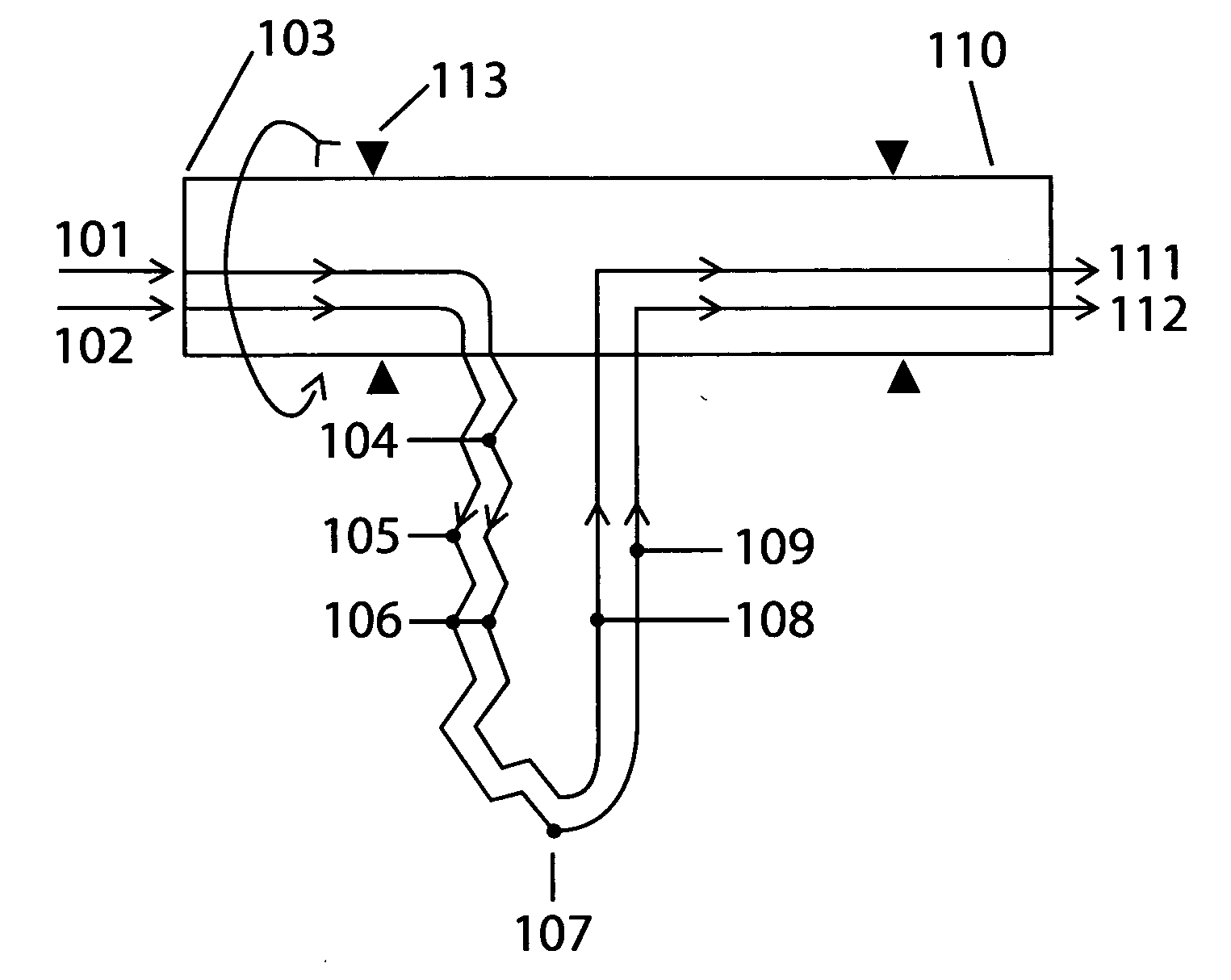Device and Method for Transporting Heat
a technology of heat transport and device, applied in the direction of moving conduit heat exchanger, stationary tubular conduit assembly, lighting and heating apparatus, etc., can solve the problems of reducing efficiency, high velocity created in fluid, large friction and turbulence, etc., and achieves less complex, higher efficiency, and greater flexibility
- Summary
- Abstract
- Description
- Claims
- Application Information
AI Technical Summary
Benefits of technology
Problems solved by technology
Method used
Image
Examples
example 1
[0044]The calculation below shows an example of theoretical temperatures for Hydrogen and Argon in a closed system with heat exchanging at the periphery, and at a peripheral speed (vp) 400 m / s. 1=inlet. 2=periphery. 3=outlet. As the flow-speed in the fluid channels can be relatively low, is resistance, pressure and temperature fall in a few percentages, and thus are neglected.
ΔT 1−2=ΔT 3−2 With same cp. (cp=heat capacity at constant pressure)
vp=400 m / s, cp h2=14320 J / kg K, cp Ar=520 J / kg K
ΔT h2(1−2)=vp2 / (2×cp)=4002 m / s / (2×14320 J / kg K)=5.6 K
ΔT Ar(1−2)=vp2 / (2×cp)=4002 m / s / (2×520 J / kg K)=154 K
[0045]At the same mass cp maximal heat exchange in T is equal to:
T=(((ΔAr−(ΔTh2×cp masse Ar) / (cp masse h2))) / 2=(154K−5.6K) / 2=74.2 K
[0046]This means that the h2 can be delivered 74.2 K warmer than the ambient from its heat exchanger on one shaft end, and on the other shaft end the argon is 74.2 K colder in its heat exchanger than the ambient.
example 2
[0047]By using air as a heating fluid in an open system as a heat exchanger to argon as the cooling fluid pressurized in a closed circuit with twice the mass cp=(1000×2 kJ / kg K) / (520 kJ K)=3.85 in heat exchanger 106.
vp=400 m / s, cp luft=1000 J / kg K, cp Ar=520 J / kg K
ΔT Ar(1−2)=vp2 / (2×cp)=4002 m / s / (2×520 J / kg K)=154 K
ΔT air(1−2)=vp2 / (2×cp)=4002 m / s / (2×1000 J / kg K)=80 K
±ΔT=(((ΔAr−(ΔT luft×cp mass air) / (cp mass Ar))) / 2
±ΔT=(((154K−(80K×1000 J / kg K) / (3.85×520 J / kg K))) / 2=57K
[0048]This means that the air is 57K warmer than the ambient and the Argon is 57 k colder than ambient at outlet in its heat exchanger, and the airs have to be supplied pressurized to periphery for heating.
[0049]But if the air under constant pressure is cooled by argon through its heat exchanger at or outside the outlet, will both air and argon have little more T as the ambient and the air is supplied pressurized to the environment's T. And at a isentropic exponent (k)=1.4. And T ambient air=291 K and 1 bar. Will then t...
PUM
 Login to View More
Login to View More Abstract
Description
Claims
Application Information
 Login to View More
Login to View More - R&D
- Intellectual Property
- Life Sciences
- Materials
- Tech Scout
- Unparalleled Data Quality
- Higher Quality Content
- 60% Fewer Hallucinations
Browse by: Latest US Patents, China's latest patents, Technical Efficacy Thesaurus, Application Domain, Technology Topic, Popular Technical Reports.
© 2025 PatSnap. All rights reserved.Legal|Privacy policy|Modern Slavery Act Transparency Statement|Sitemap|About US| Contact US: help@patsnap.com


